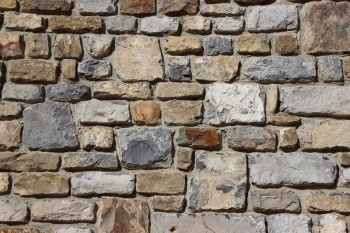
Stone buildings are subject to the same detrimental effects of weather and other environmental factors that can damage wood and other siding materials. But while most people expect wood to decay, they assume stone will last forever. It is certainly more durable than other building and siding products, but maintenance is still required. Stone facades bake in the summer and freeze in the winter. Stone buildings in cities are exposed to polluting gases and splashed by salty slush from streets and sidewalks. To survive the ravages of these elements, stone buildings require maintenance.
Water is almost always the source of the problem. Moderate exposure to rainwater is inevitable and, to some extent, beneficial as it helps clean exterior surfaces. But damage occurs with cycles of heavy saturation and drying. These cycles may be caused by seasonal weather factors, leaking gutters, ineffective cornices, blocked drains or clinging vegetation.
The most common causes of stone deterioration include:
- The freeze/thaw cycle. Water drawn deep into the stone by capillary action causes mechanical stress on the porous walls when it freezes.
- Salt crystallization. Soluble salts are carried with water into the pore network, where they form crystals. Because the salts have larger volume when crystallized than when dissolved, their expansion damages the internal structure of the stone. A telltale sign of a potential problem in stone is the formation of efflorescence (salt deposits) on the surface.
- Acidic action. Acid deposits dissolve stone. The result is roughening of the surface or separation of the layers found in some stones.
- Vegetation. Moss, vines and even thick shrubbery around a stone foundation trap moisture in stone and prevent evaporation. The greatest damage is often caused by roots, which gradually open joints and dislodge particles of mortar through mechanical action.
- Structural movement. In cases of severe settling or upheaval, sound stones will crack at weak points, such as lintels and sills of doors and windows.
Stone veneers, such as the currently popular manufactured stone products, have another set of potential concerns that may be more specific to the particular substrate, adhesives or mortar used than anything else. While manufactured stone is a synthetic composite made with certain qualities designed to even improve on real stone in some cases, it can be subject to manufacturing defects and installation problems, as well as many of the same problems affecting real stone.
Remember, these tips are only general guidelines. Since each situation is different, contact a professional if you have questions about a specific issue. More home safety and maintenance information is available online at housemaster.com.
